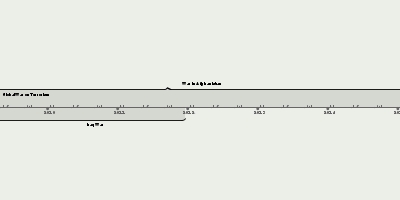Yemeni civil war (1994) (4 май 1994 г. – 7 июл 1994 г.)
Описание:
The Yemeni civil war, also known as the Summer War of 1994, was a civil war fought between the two Yemeni forces of the pro-union northern and the socialist separatist southern Yemeni states and their supporters.Yemen held its first parliamentary elections on April 27, 1993, which confirmed the southerner fears. Former President of South Yemen, Ali Salim Al-Beidh's party (YSP) won only 54 of the 301 parliament seats, while former president of Northern Yemen Ali Abdullah Saleh's GPC took 122 seats and a northern Islamist-tribal alliance, Al-Islah, captured 62 seats. Saleh, Beidh, and Attas retained their positions but Al-Islah's influential leader, the Sheikh Abdullah ibn Husayn al-Ahmar of the Hashid tribal confederation, became speaker of the parliament. The former 50–50 split between the GPC and YSP became an uneven three-way partnership.
Relations between Saleh and many left-wing politicians soured over the following years. The President eventually began to enlist Islamists to weaken his opponents, and allowed them to build up a presence in the country. Jihadists consequently assassinated several Southern communists.
As a new oil field was brought online in the Hadhramaut Governorate in the south, southerners began to feel that their land, home to the majority of the country's oil reserves, was illegally appropriated as part of a planned conspiracy by the rulers of North Yemen.
Finally, the newly unified nation faced political crisis when an estimated 800,000 Yemeni nationals and overseas workers were sent home by Saudi Arabia following Yemen's decision not to support Coalition forces in the Gulf War. Remittances from these workers, an important part of the economy, were slashed and many Yemenis were placed in refugee camps while the government decided where to house them and how to re-integrate them into the workforce. The repatriation of these Yemenis immediately increased the nation's population by 7%.
Vice President Ali Salem al Beidh withdrew to Aden in self-imposed exile in August 1993 and said he would not return to the government until his grievances were addressed. These included northern violence against his Yemeni Socialist Party, as well as the economic marginalization of the south. Negotiations to end the political deadlock dragged on into 1994. The government of Prime Minister Haidar Abu Bakr al-Attas, the former South Yemen Prime Minister, became ineffective due to political infighting.
An accord between northern and southern leaders was signed in Amman, Jordan on February 20th, 1994, but this could not stop the crisis. The overall security situation in the country has deteriorated, with accusations from southern leaders that there have been numerous killings targeting southerners and that northern leaders are working to gradually marginalize them and seize all power. During these tensions, both the northern and southern armies–which had never integrated–gathered on their respective frontiers.
Full-scale war broke out on May 4th, when the Southern Air Force bombed Sana'a, Hodeida and Taiz; the Northern Air Force responded by bombing Aden, al-Anad military airport, al-Haswa power plant, oil refineries, radio and television stations in Aden. President Saleh declared a 30-day state of emergency, and foreign nationals began evacuating the country, the Aden's government in Aden has declared full mobilization.
Northern troops and Jihadist forces led by Tariq al-Fadhli entered Aden on July 4th, factually ending the conflict. On July 6th, the Northern Command announced its readiness to implement the Security Council resolution calling for a ceasefire. However, subsequent developments in the armed conflict showed that this statement was, from the very beginning, a façade to unite the northern forces and give them an opportunity to take advantage of the relative détente in the Southern military efforts and mislead world public opinion. The truce lasted no more than a few hours, after which the fighting for full control over Aden resumed. There were many signs and indications that the Northern Command was determined to establish its full control over all areas of southern Yemen. Supporters of Ali Nasir Muhammad greatly assisted military operations against the secessionists.
By July 7, the Northern Army captured Aden. After Aden's fall, most resistance quickly collapsed and top southern military and political leaders fled into exile.
Despite the civil war being a short conflict, it was brutal and fought fiercely. Virtually all of the fighting in the civil war occurred in the southern part of the country, despite air and missile attacks from the south against cities and major installations in the north. Southerners sought support from neighbouring states and reportedly received military assistance from Saudi Arabia and Oman, which felt threatened by a united Yemen The United States repeatedly called for a cease-fire and a return to the negotiating table. Various attempts, including by a UN special envoy and Russia, were unsuccessful to effect a cease-fire.
The war resulted in the defeat of the southern separatists and the reunification of Yemen, and the flight into exile of many leaders of the Yemeni Socialist Party (YSP) and other separatists.
Добавлено на ленту времени:
Дата:
4 май 1994 г.
7 июл 1994 г.
~ 2 months and 4 days
